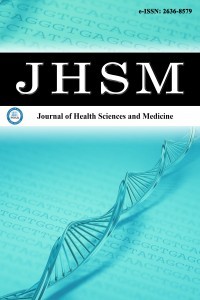1.
Hayn E. Successful treatment of complex traumatic andsurgical wounds with a foetal bovine dermal matrix. Int Wound.2014;11(6):675-680. doi: 10.1111/iwj.12028. Epub 2013 Mar 4.
2.
James S A Neill, William C Lineaweaver. Tissue response tobovine fetal collagen extracellular matrix in full-thickness skinwounds. Am J Clin Pathol. 2013;140(2):248-252. doi: 10.1309/AJCPMF3B9XJAKXKM.3.
3.
Monaco JL., Lawrence WT. Acute wound healing an overview. ClinPlast Surg. 2003;30(1):1-12. doi: 10.1016/s0094-1298(02)00070-6.
4.
Herndon DN, Nguyen TT, Gilpin DA. Growth factors. Localand systemic. Arch Surg. 1993;128(11):1227-1233. doi: 10.1001/archsurg.1993.01420230055009.
5.
Wang D, Chen H, Lei L, et al. Biofabricated macrophage andfibroblast membranes synergistically promote skin woundhealing. Bioeng Transl Med. 2022;7(3):e10344. doi:10.1002/btm2.10344
6.
P Martin, J Hopkinson-Woolley, J McCluskey. Growth factors andcutaneous wound repair. Prog Growth Factor Res. 1992;4(1):25-44. doi: 10.1016/0955-2235(92)90003-z.
7.
Postlethwaite AE, Keski-Oja J, Moses HL, Kang AH. Stimulation ofthe chemotactic migration of human fibroblasts by transforminggrowth factor beta. J Exp Med. 1987;165(1):251-256. doi:10.1084/jem.165.1.251
8.
Tomasek JJ, Gabbiani G, Hinz B, Chaponnier C, Brown RA.Myofibroblasts and mechano-regulation of connective tissueremodelling. Nat Rev Mol Cell Biol. 2002;3(5):349-363. doi:10.1038/nrm809
9.
Golinko MS, Clark S, Rennert R, et al. Wound emergencies: theimportance of assessment, documentation, and early treatmentusing a wound electronic medical record. Ostomy Wound Manag.2009;55:54.
10.
Armstrong DG, Gurtner GC. A histologically hostile environmentmade more hospitable? Nat Rev Endocrinol. 2018;14:511.
11.
Armstrong DG, Boulton AJM, Bus SA. Diabetic foot ulcers andtheir recurrence. N Engl J Med. 2017;376:2367.
12.
Kirsner RS, Bohn G, Driver VR, et al. Human acellulardermal wound matrix: evidence and experience. Int Wound J.2015;12(6):646-654. doi:10.1111/iwj.12185
13.
Brigido SA, Schwartz E, McCarroll R, Hardin-Young J. Use of anacellular flowable dermal replacement scaffold on lower extremitysinus tract wounds: a retrospective series. Foot Ankle Spec.2009;2(2):67-72. doi:10.1177/1938640009333474
14.
Jeon M, Kim SY. Application of a paste-type acellular dermalmatrix for coverage of chronic ulcerative wounds. Arch Plast Surg.2018;45(6):564-571. doi:10.5999/aps.2018.00605
15.
Marston WA, Hanft J, Norwood P, Pollak R; Dermagraft DiabeticFoot Ulcer Study Group. The efficacy and safety of Dermagraft inimproving the healing of chronic diabetic foot ulcers: results ofa prospective randomized trial. Diabetes Care. 2003;26(6):1701-1705. doi:10.2337/diacare.26.6.1701
16.
Nicholas MN, Yeung J. Current Status and Future of SkinSubstitutes for Chronic Wound Healing. J Cutan Med Surg.2017;21(1):23-30. doi:10.1177/1203475416664037
17.
Zelen CM, Serena TE, Gould L, et al. Treatment of chronic diabeticlower extremity ulcers with advanced therapies: a prospective,randomised, controlled, multi-centre comparative studyexamining clinical efficacy and cost. Int Wound J. 2016;13(2):272-282. doi:10.1111/iwj.12566
18.
Karr JC. Retrospective comparison of diabetic foot ulcer andvenous stasis ulcer healing outcome between a dermal repairscaffold (PriMatrix) and a bilayered living cell therapy (Apligraf)Advances in Skin & Wound Care. 2011;24(3):119-125.
19.
Lullove E. Acellular fetal bovine dermal matrix in the treatment ofnonhealing wounds in patients with complex comorbidities. J AmPediatr Med Assoc. 2012;102(3):233-239.
20.
Kavros SJ. Acellular fetal bovine dermal matrix for treatmentof chronic ulcerations of the midfoot associated with charcotneuroarthropathy. Foot & Ankle Specialist. 2012;5(4):230-234.
21.
Clark RA, Ghosh K, Tonnesen MG. Tissue engineering forcutaneous wounds. J Invest Dermatol. 2007; 127(5): 1018-1029.
22.
Schultz GS, Wysocki A. Interactions between extracellular matrixand growth factors in wound healing. Wound Repair Regen.2009;17(2):153-162.
23.
Gibson D, Cullen B, Legerstee R, et al. MMPs Made Easy. WoundsInt. 2009; 1(1).
24.
Nataraj C, Ritter G, Dumas S, et al. Extracellular wound matrices:novel stabilisation and sterilisation method for collagen-basedbiologic wound dressings. Wounds. 2007; 19(6):148-156.
25.
Hodde JP, Hiles MC. Bioactive FGF-2 in sterilized extracellularmatrix. Wounds. 2001;13(5):195-201.
26.
Wiegland C, Abel M, Ruth P, Hipler UC. Influence of thecollagen origin on the binding affinity for neutrophil elastase.Abstract presented at: 18th Conference of the European WoundManagement Association (EWMA); May 14-16, 2008.
27.
Mulder G, Lee DK. A retrospective clinical review of extracellularmatrices for tissue reconstruction: equine pericardium as abiological covering to assist with wound closure. Wounds.2009;21(9):254-61.
28.
Cornwell KG, Landsman A, James KS. Extracellular matrixbiomaterials for soft tissue repair. Clinics in Podiatric Medicineand Surgery vol. 26, no. 4, pp. 2009:507-23.
29.
Limova M. Active wound coverings: bioengineered skin anddermal substitutes. Surg Clin North Am. 2010; ;90(6):1237-1255.
30.
Wilson GJ, Courtman DW, Klement P, Michael Lee J, YegerH. Acellular matrix: a biomaterials approach for coronaryartery bypass and heart valve replacement. Ann Thorac Surg.1995;60:353-358.
31.
Onesti MG, Carella S, Maruccia M, Marchese C, Fino P, ScuderiN. A successful combined treatment with dermal substitutesand products of regenerative medicine in a patient affectedby extravasation injury from hypertonic solution. In Vivo2012;26(1):139-142.
32.
Smith LT, Holbrook KA, Madri JA. Collagen types I, III, and V inhuman embryonic and fetal skin. Am J Anat. 1986;175:507-521.
33.
Sykes B, Puddle B, Francis M, Smith R. The estimation of twocollagens from human dermis by interrupted gel electrophoresis.Biochem Biophys Res Commun. 1976;72:1472-1480.
34.
Postlethwaite AE, Seyer JM, Kang AH. Chemotactic attraction ofhuman fibroblasts to type I, II, and III collagens and collagen-derived peptides. Proc Natl Acad Sci U S A. 1978;75:871-875.
35.
Liu X, Wu H, Byrne M, Krane S, Jaenisch R. Type III collagen iscrucial for collagen I fibrillogenesis and for normal cardiovasculardevelopment. Proc Natl Acad Sci U S A. 1997;94:1852-1856.
36.
Wanitphakdeedecha R, Chen TM, Nguyen TH. The use ofacellular, fetal bovine dermal matrix for acute, full-thicknesswounds. J Drugs Dermatol. 2008;7:781-784.
37.
Cornwell KG, Landsman A, James KS. Extracellular matrixbiomaterials for soft tissue repair. Clin Podiatr Med Surg.2009;26(4):507-523. doi:10.1016/j.cpm.2009.08.001

